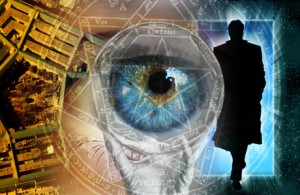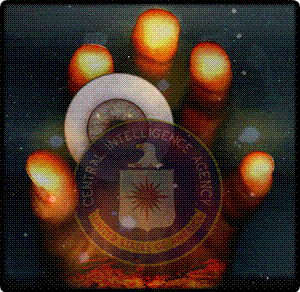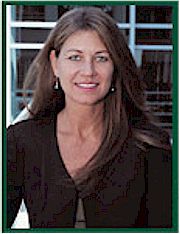Remembering Ingo Swann 1933-2013
 One of the more memorable evenings I once spent was with my sainted friend and author Marilyn Ferguson (happy b-day Ferg!) at the New York condominium of former psychic spy and government remote viewer Ingo Swann.
One of the more memorable evenings I once spent was with my sainted friend and author Marilyn Ferguson (happy b-day Ferg!) at the New York condominium of former psychic spy and government remote viewer Ingo Swann.
Ingo Swann was a psychic, artist, and author, best known for his work as a co-creator along with Russell Targ and Harold Puthoff of the discipline of Remote Viewing, specifically the Stargate Project, writing several books on remote viewing and related topics.
Ingo was born September 14th 1933 in Colorado at the small town of Telluride. He attended Westminster College in Utah where he attained his double bachelor’s art and biology degrees. After school, Ingo joined the Army where served for 15 years, 3 of which he served in Korea and the other 12 under the U.N Secretariat. During the 12 years under UN, Ingo was also trying to build his solo career in art.
Ingo’s active participation in parapsychology research began at age 36, in the year 1969. Until he was 56, Ingo only worked in highly controlled lab environments. He worked alongside other researchers in the PSI investigations field. Ingo was highly involved in lectures pertaining psychic potentials and its faculties but had never demonstrated the abilities he had publicly. Due to his notable participation in numerous experiments and trials, he was included in various writings by renowned authors among them being Martin Elbon who referred to him in his book as “parapsychology’s most tensed guinea pig”. Some psychic news and media outlets termed Ingo as the “scientific psychic” due to his enormous involvement in the science.
Due to some evident personal potential in psychic abilities while still in his childhood, Ingo grew more and more interested in parapsychological literature as well as occult through participation in mind and psychic development type programs.
 Ingo found it necessary to distinguish between psychic ability and psychic phenomenon processes. He specifically noted that though parapsychology looked into paranormal phenomena such as telepathy, psycho kinesis and ESP, there was absolutely no interest in establishing the evidence for the processes, especially through mental processes. It is from this difference that Ingo created process enhancement approaches for perceptions of PSI. The approaches were in line with the developmental abilitism theories developed by Abraham Maslow as well as the historic descriptions used in Eastern philosophical and occult literature.
Ingo found it necessary to distinguish between psychic ability and psychic phenomenon processes. He specifically noted that though parapsychology looked into paranormal phenomena such as telepathy, psycho kinesis and ESP, there was absolutely no interest in establishing the evidence for the processes, especially through mental processes. It is from this difference that Ingo created process enhancement approaches for perceptions of PSI. The approaches were in line with the developmental abilitism theories developed by Abraham Maslow as well as the historic descriptions used in Eastern philosophical and occult literature.
Between 1970 and 1971 Swan conducted experiments to confirm the influence of mental activities on plants. The next year was when he went on to involve psychokinetic experiments. They were found to influence temperatures in a setting with controlled atmospheric features which had been set up by Larry Lewis and Schmeidler Getrude at New York’s City College. The experiment involved Swann causing effects to some devices for measuring temperature (thermistors) which had been placed inside thermos bottles that were insulated and at a distance of 25 feet from where Ingo was. For a clear report on the findings, see (G.R. Schmeidler, “PK Effects Upon Continuously Recorded Temperature,” Journal of the American Society for Psychical Research, no. 4, Oct. 1973).
Ingo was also used as a subject in experiments for distant psychic perception or what many refer to as out-of-body travel and remote viewing. This was between the years of 1972 and 1973. The experiments were held at the American Society for Psychical Research. The experiments involved Swann trying to perceive symbols placed far from view in small platforms. The platforms were a couple of feet over his head while he seated in a chair whose movements were being closely monitored using electrodes. The electrodes could pick up even the slightest movements.
 Even with tough lab conditions the experiments were still successful as Ingo managed to show what was considered to be significant psychic results. In a particular test, Swan stated that there was a light in the box that was inoperative and did not properly illuminate the object in target.
Even with tough lab conditions the experiments were still successful as Ingo managed to show what was considered to be significant psychic results. In a particular test, Swan stated that there was a light in the box that was inoperative and did not properly illuminate the object in target.
Between ‘72 and ‘73, Swann came up with suggestions for protocols that would test for processes of mind-dynamic. This was at the American Society for Psychical Research. The tests were meant to improve on ESP. Dr. Getrude on the other hand came up with the terminology “remote viewing” and described it as the process of viewing objects or rather targets that were at a distant. Gertrude’s very first protocols in remote viewing were later on used in collaboration with other searchers in the department such as Russell Targ. Most of the other laboratories only repeated what had already been done in as far as remote-viewing experiments were concerned.
The success of Ingo Swann at the East Coast experiments and research attracted the attention of Harold E. (‘Hal’) Puthoff who was a quantum physicist at the Stand for Research Institutes which is today known as the SRI International. Ingo agreed to work with Puthoff and was involved in “psychenergetics project” of SRI that had been set up by Puthoff in a bid to establish the vital faculties in psi. This was between the years of 1973 and 1989.
The very first successful experiment they undertook was one which was aimed at influencing a super-cooled Josephson’s magnetic field. The Josephson had been placed inside a quark detector which was basically a complex device used in finding particles that were subatomic. The whole apparatus had been highly concealed being placed inside concrete at a depth of about 5 feet. Swann managed to visualize the target that had been hidden. This was when some variations in terms of sine waves were recorded. The whole PK effect findings were reported at one of the parapsychology and quantum physics conferences.
In a “psychic probe”, joined by fellow psychic Harold Sherman, Ingo managed to ‘visit’ Jupiter the planet. This was on 27 the April, 1973. Swann actually made a drawing of his findings during the probe. He drew tiny asteroids forming a ring that surrounded the planet. Back then, scientists claimed that no such thing existed. Its existence was only confirmed far much later in the year 1979.
During the first couple of experiments, Ingo was considered to be a highly successful and unique test subject. This was due to the simple fact that his command of the experiments aided him to come up with the required results and sustain the same success rate over time. Through the parapsychology history, tests subjects were only spontaneously successful. Rarely, or rather never again, did test subject mange to maintain such a success rate over time. However, subjects were found to suffer from what experts referred to as the “PSI-missing effect” or alternatively the “decline effect”. This effect is what erased their success statistically speaking. Skeptics in such cases jumped to the conclusion that the previous success of the subjects was simply brought about by some external factors and not PSI abilities in human beings as claimed by the parapsychologists.
A majority of books on parapsychology, published after 1973, referred to Ingo in more or less the same way. Analysts in the field however admit that Swann’s work in the field went a long way in achieving the much needed push that was needed by psi being experienced in humans to get validated.
Ingo had been on the PSI development cutting edge for over 19 years and had established what to date is referred to as the longest run in as far subject records of the psychic research field was concerned. He went on to retire after this period and went solo to do research on consciousness, its states and the problems it faces.
In interviews that were done during the retirement period, Swann stated that the constant need to validate the faculties of PSI as well as the exceptional abilities they grant was one of the reasons for his retirement. They had taken their toll. The same applied to the stress-filled environment he was subjected to in various laboratories. He never failed to accept lecture invitations but prefered never to appear in the media.
On March 1994, Ingo read a paper at the UN which was given the title; ‘Scientists find the basis for seventeen-plus human senses and perceptions’. In the paper, Ingo admitted that the exceptional experiences as well as PSI faculties are not entirely scientific in nature.
One of the missing facts that are highly significant is Hal Puthoff’s research program in which Ingo was involved had been funded highly by the Intelligence Agency (CIA) of the United States. It was also brought to continuity by the military. A good review of the history of remote viewing in this case can be read here: The Beginnings of Remote Viewing.
Ingo, under support of the military plus the intelligence communities, worked towards exploring more on remote viewing and its boundary conditions. This was through an SRI-International program. He specifically used his abilities to undercover secrets of opponents of America in the Cold War. Puthoff and Ingo were later asked to come up with a program of remote viewing that could be taught to ordinary military personnel so that they could also operate as psychic spies.
Through extensive research and years of hard work, they managed to come up with what they referred to as “controlled remote viewing”. This was a teachable trade that could be mastered by practically any individual. The program contained 6 stages. However, it could only be taught to people that were certified to have highly competent minds. The two; Hal Puthoff and Ingo Swann managed to teach a number of individuals directly. They included: Tom McNear, Ed Dames, Bill Ray, I (Paul H. Smith). A high number of other individuals were taught as well. The trade was then passed down to other individuals with the likes of Lyn Bucchana, David Morehouse and Mel Riley included.
To get a complete list of all the accomplishments that Swann managed to achieved, read them here: here.
“Even in his retirement, Ingo Swann maintained an interest in the progress of our understanding of human mental functioning, and was an avid observer not only of the human condition itself, but of the inroads being made to discover the full potential of the mind. At the time of his death, on the evening of January 31, 2013, Ingo was well along in the process of creating a new book featuring his marvelous art work.” Paul H. Smith, Ph.D.
Additional sources – RViewer.com – Paul H. Smith Ph.D
——————————————–
 Lynnea Bylund is managing director of Gandhi Legacy Tours, Director of Gandhi Worldwide Education Institute, founder of Catalyst House and has nearly three decades of experience in administration, marketing and business development. She was a nationally recognized spokeswoman for the emerging alternative video and information delivery industries. She has a degree in holistic health-nutrition from the legendary and controversial health educator and activist Dr. Kurt Donsbach, she is the founder of two not-for-profit small business-based wireless trade associations and has lobbied on Capitol Hill and at the FCC where she has spoken out strongly against the cable TV monopoly, illegal spectrum warehousing and ill-conceived congressional schemes to auction our nation’s precious airwaves to the highest bidder.
Lynnea Bylund is managing director of Gandhi Legacy Tours, Director of Gandhi Worldwide Education Institute, founder of Catalyst House and has nearly three decades of experience in administration, marketing and business development. She was a nationally recognized spokeswoman for the emerging alternative video and information delivery industries. She has a degree in holistic health-nutrition from the legendary and controversial health educator and activist Dr. Kurt Donsbach, she is the founder of two not-for-profit small business-based wireless trade associations and has lobbied on Capitol Hill and at the FCC where she has spoken out strongly against the cable TV monopoly, illegal spectrum warehousing and ill-conceived congressional schemes to auction our nation’s precious airwaves to the highest bidder.
Ms. Bylund is a founder and former CEO of a Washington DC telecommunications consulting and management company with holdings in several operating and developmental wireless communications systems and companies. In 1995 Lynnea became the first female in the world to be awarded a Broadband PCS operating permit – she was one of only 18 winners, along with Sprint, AT&T, and Verizon in the biggest cash auction in world history, raising a whopping $7.7 billion. Lynnea also spear-headed the successful effort to launch the first cable TV network in the South Pacific islands.
… > Follow Lynnea on: +LynneaBylund – Twitter – LinkedIn – FaceBook – Pinterest & YouTube














